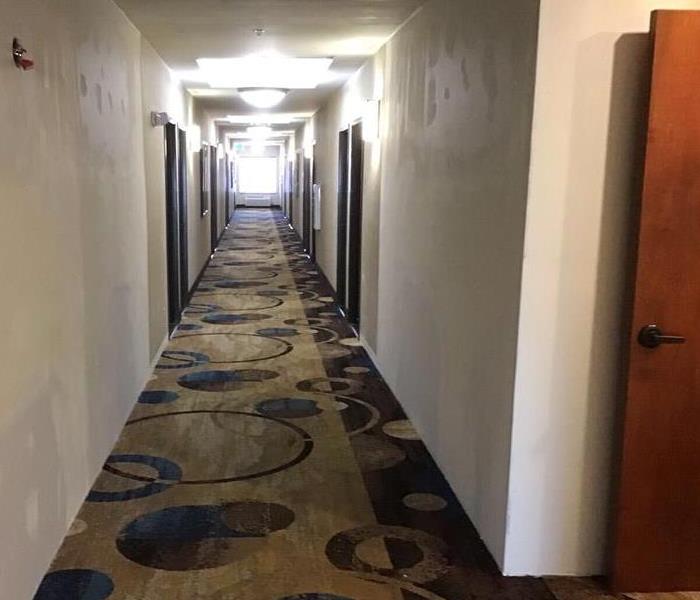
Step 4: Drying and Dehumidification
Our Water Damage Restoration Process
Once the excess water has been removed from your property, the floors and walls may appear dry, but a quick inspection will reveal they are wet even if they are not wet to the touch. Using advanced moisture meters and moisture probes our technicians are able to know what materials are wet and affected and which materials are not. Nearly all building materials, like wood, drywall, and flooring materials, are porous and therefore retain water. This retained water can cause the materials to break down, warp, or cause mold or microbial growth damage. it is important to make sure that materials are dried correctly and completely to make sure your home is restored correctly.
Drying / Dehumidification
Our Professionals will use room measurements, temperature, and relative humidity to determine the optimal number of air movers and dehumidifiers to dry your home or business. We’ll carefully monitor the progress using moisture meters until the materials return to acceptable drying goals.
- Use Dehumidification Equipment
- Use Monitoring Equipment to Track Progress
Monitor Floor and Walls
We check the moisture levels to monitor the drying process.
- Monitor Floors
- Monitor Walls
Drying Equipment
- Industrial-grade dehumidifiers help prevent secondary water damage like swelling and warping of floors, walls, and furniture.
- High-speed air movers create airflow across walls, carpets, pads, and furniture, which accelerates the evaporation of moisture.

 24/7 Emergency Service
24/7 Emergency Service




